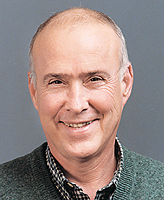 |
|
| Prof.
David Messick |
|
| |
|
|
|
| |
|
Practice:
David Messick
Improving
financial — and social — health
By
David Messick, the Morris and Alice Kaplan Professor
of Ethics and Decision in Management, and by Kathryn Aiken
TMP 2004,director of human resources, general affairs and
corporate communications at SC Johnson Japan
More
than 30 years ago, Milton Friedman, the doyen of free market
economics, wrote that an executive’s duty
was to increase the firm’s profits while obeying
laws and abiding by society’s ethical rules. (Many
modern corporate leaders seem to have misconstrued this
obligation to mean that the duty of an executive is to
enrich himself.) Implicit in this duty is the obligation
to do “good” for either of two reasons: to
conform to the basic rules of society, or enhance the company’s
profitability. In the first case, duty has nothing to do
with profit maximization, but rather the societal constraints
on that maximization. Here, Friedman’s dictum tells
executives what they must not do — lie to people,
harm them or damage their property.
In the
second case, Friedman requires executives to do “good” when
doing so will increase the health of the firm. Here is
how executives at one firm discharged this fiduciary duty
while
also improving public health.
Asthma
is a serious problem for children in many inner cities,
particularly in the southern United States. Among
Hispanics
in Dade County, Florida, the rate of infection can
be as high as 25 percent, but good data on the prevalence
are difficult
to obtain because asthma is considered a possible sign
of poor housekeeping. Children with acute asthmatic
reactions
are, therefore, sometimes diagnosed as having “bronchitis” when
admitted to emergency rooms.
How
can a brand manager for a product like the insecticide
Raid® have an impact on this public health problem?
Some data suggest a rather simple causal dynamic.
In warmer
climates, cockroaches are endemic. Their droppings can
create asthmatic reactions in kids,
so parents — especially
mothers — tend to be aggressive toward cockroaches.
If a mother sees a roach, she may empty a can of insecticide
in the vicinity. Children can also have respiratory reactions
to insecticides, so this kind of preventive “overkill” is
also problematic. If a firm established a program to help
mothers understand how to use insecticides appropriately,
the roach waste/allergens would be reduced, reducing the
incidence of asthma. SC Johnson’s program “Ninos Saludables, Hogares
Saludables” (Healthy Children, Healthy Homes), trains
Spanish-speaking volunteers to educate neighbors in techniques
for maintaining roach-free homes. SC Johnson cleaning products,
rather than Raid®, were used to demonstrate the techniques.
The company launched the program May 6, World Asthma Day,
and made bilingual presentations, distributing product
coupons, samples and informational brochures.
SC Johnson’s partners in this pilot were Research Triangle
Institute, an independent, nonprofit research organization,
Florida International University School of Nursing, and Zubi
Advertising. While all agreed to SC Johnson’s corporate
sponsorship of this effort, they excluded specific brand
names in the materials to safeguard scientific credibility.
A Miami retailer, Winn Dixie, joined the effort by featuring
SC Johnson displays and maintaining information tables
in their stores.
SC Johnson
hired a research firm to measure the program’s
impact on the behavior of the parents who had received the
training, and track sales results for the firm’s
household products. The initial data indicated that
many parents changed
their cleaning habits and said they would repurchase
the products that they had previously been using. There
were
also significant increases in the knowledge of triggers
that worsen asthma.
The
challenge now for executives who designed this program
is to improve and sustain it. If they succeed,
public
health will improve and SC Johnson will expand its
consumer base
while building an innovative peer-to-peer model that
measurably affects understanding and behavior change
among a target
population.
This
case, written by Kathryn Aiken for a Kellogg class, is
an excellent illustration of managing according
to the “Triple P” bottom line — improving
profits, aiding the planet and helping people.
Friedman
would be pleased.
Read
what Professor Emeritus Gene Lavengood says about the
theoretical issues behind this practice
|



